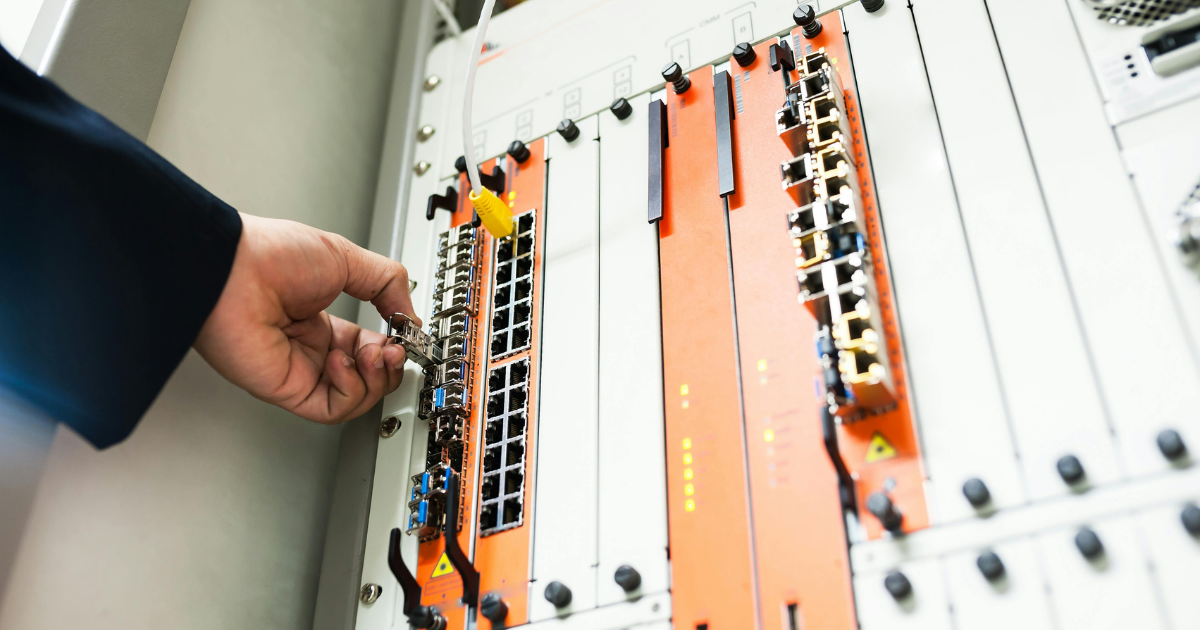In today’s fast-paced digital age, a slow internet connection is more than an inconvenience, it’s a productivity killer. Whether you’re working remotely, streaming your favorite content, or simply browsing the web, slow speeds can lead to frustration and missed opportunities.
Fortunately, there are many ways to boost your internet performance without calling your provider every time something feels off. Understanding the root causes and applying smart, strategic fixes can make a world of difference. In this blog, we’ll break down how to improve internet speed, optimize your setup, and enjoy seamless connectivity every day.
Understanding Internet Speed and Performance
Before diving into solutions, it’s essential to understand how internet speed works. Internet speed is measured in megabits per second (Mbps) and refers to how much data can be transferred over your connection in a given amount of time.
This includes both download speed (getting data from the internet to your device) and upload speed (sending data from your device to the internet).
Performance can be affected by a variety of factors, some internal, like outdated equipment or heavy app usage, and some external, like network congestion or service provider limitations.
Latency, or the time it takes for data to travel between its source and destination, also plays a critical role. Knowing what to look for allows you to pinpoint bottlenecks and take meaningful action.
The Importance of Conducting an Internet Speed Test
One of the first steps in troubleshooting a slow connection is performing an internet speed test. This test gives you a snapshot of your connection’s current download and upload speeds, as well as ping (latency). It helps verify whether you’re actually getting the speeds you’re paying for.
Tools like Ookla’s Speedtest, Google’s speed test, or Fast.com by Netflix provide quick and accurate readings. Run tests at different times of day and from various devices to spot patterns. This information can be crucial when speaking with your provider or making changes to your setup.
Tips to Increase Bandwidth for Faster Browsing
Bandwidth is a shared resource, especially in homes or offices with multiple users and devices. If your household is streaming videos, downloading large files, or gaming simultaneously, your bandwidth gets spread thin. Here are some actionable ways to increase it:
- Limit high-bandwidth activities during peak usage hours.
- Disconnect idle devices from your network.
- Use Ethernet connections for devices that require stability (e.g., PCs, gaming consoles).
- Set bandwidth limits on guest networks.
- Schedule large downloads for off-peak hours.
According to a study by Pew Research Center, households with more than five connected devices experience notably slower speeds during high-demand periods, highlighting the importance of bandwidth management.
Optimize Router Settings for Maximum Efficiency
One of the most overlooked yet impactful ways to improve your internet speed is to optimize your router settings. Most routers come with default configurations, but these aren’t always ideal for your specific environment. Begin by ensuring your router firmware is up to date. Manufacturers frequently release updates that enhance performance and security.
Next, change your router’s channel or band. If you’re on the 2.4 GHz band, switching to the less crowded 5 GHz band can reduce interference and boost speed. Additionally, enable Quality of Service (QoS) settings to prioritize bandwidth for critical applications like video calls or online gaming.
If you want advanced customization and monitoring capabilities, open-source firmware like DD-WRT or OpenWrt can be installed on compatible routers, offering far greater control. PCMag’s Router Optimization Guide is a helpful, non-promotional resource for diving deeper into router tuning.
Strategies to Reduce Latency and Improve Connectivity
Reducing latency leads to smoother video calls, faster loading times, and an overall better browsing experience. Latency can be improved by taking the following measures:
Place your router in a central, unobstructed location to minimize signal travel distance. Use Ethernet cables for high-priority devices whenever possible. Consider investing in a mesh Wi-Fi system if you have a large home or office space, as it eliminates dead zones and keeps latency low throughout.

You should also limit the number of connected devices and close unnecessary apps running in the background, which consume resources and increase ping. Using a VPN service with low-latency servers can also help route your traffic more efficiently, particularly for international connections.
Eliminate Interference for a Stable Internet Connection
Wireless signals are highly susceptible to interference from other devices and environmental obstacles. Microwaves, cordless phones, baby monitors, and even thick walls can disrupt your Wi-Fi signal, causing drops in speed and connection stability.
To combat this, ensure your router is placed away from other electronics and in a high, open area. Choose a Wi-Fi channel that’s less congested—apps like WiFi Analyzer (for Android) or NetSpot (for Windows/macOS) can help you visualize channel usage and signal strength.
Consider an Upgrade: Modem and Equipment Improvements
Sometimes, the issue isn’t your internet plan but outdated hardware. Old modems and routers often don’t support the latest technologies required for high-speed connections. If you’re using equipment more than three to five years old, it’s likely time for an upgrade.
Modern modems are built to support faster speeds and improved bandwidth efficiency, especially those certified for DOCSIS 3.1 (for cable internet) or compatible with Wi-Fi 6. Additionally, upgrading to a dual-band or tri-band router allows for better distribution of devices across frequencies, minimizing congestion and improving overall speed.
Renting equipment from your ISP may not be the most cost-effective or up-to-date solution. Purchasing your own modem and router can pay off quickly in performance and savings.
Clear Cache and Disable Background Apps for Enhanced Speed
- Clear Your Browser Cache Regularly. Cached files help load websites faster, but over time, they accumulate and can slow down performance. Periodically clearing your cache keeps your browser running efficiently.
- Disable Background Apps. Programs like cloud sync tools, messaging apps, and auto-updaters often run silently in the background, consuming bandwidth and processing power.
- Turn Off Auto-Sync For Non-Essential Apps. Prevent unnecessary apps from constantly syncing and using up valuable internet resources.
- Pause Background Software Updates. Schedule updates for off-peak hours or pause them when performance matters most to prevent them from eating into your available bandwidth.
- Use Browser-Specific Guides For Cache Clearing. For step-by-step instructions, refer to Mozilla’s support guide. The same principles apply to other browsers, such as Chrome and Edge.
Supercharge Your Connection with Coastal IT’s Internet Optimization Solutions
Improving your internet speed can be a DIY task, but when your performance issues persist despite best efforts, it may be time to bring in the experts. At Coastal IT, we specialize in delivering tailored internet optimization solutions that address everything from equipment upgrades and configuration to interference mitigation and network security.
Our team can assess your current infrastructure, conduct advanced diagnostics, and implement scalable solutions that grow with your digital demands. Whether you’re a business looking to enhance remote work capabilities or a household needing smoother streaming and gaming, Coastal IT is your trusted partner for a faster, more reliable connection. Contact us today and let Coastal IT help you get the most out of your internet.

FAQs
How can optimizing router settings improve internet speed and performance?
By updating firmware, switching to less congested channels, and enabling QoS features, you can ensure your router allocates bandwidth efficiently and minimizes signal interference.
What steps should be taken to conduct an effective internet speed test for better results?
Disconnect unused devices, pause large downloads, and run the test directly via Ethernet to get the most accurate reading of your network’s true speed.
Which strategies can help reduce latency and enhance connectivity in my internet connection?
Using Ethernet for priority devices, placing the router centrally, reducing the number of connected devices, and upgrading to a mesh network can all lower latency.
How does clearing the cache and disabling background apps contribute to enhanced internet speed?
Clearing cache removes outdated data that slows browser performance, and disabling apps prevents unnecessary background processes from consuming bandwidth.
What are the potential benefits of upgrading the modem and equipment for improved internet speed?
New equipment supports modern technologies like Wi-Fi 6 and DOCSIS 3.1, providing faster data transfer rates, better bandwidth handling, and improved security.








